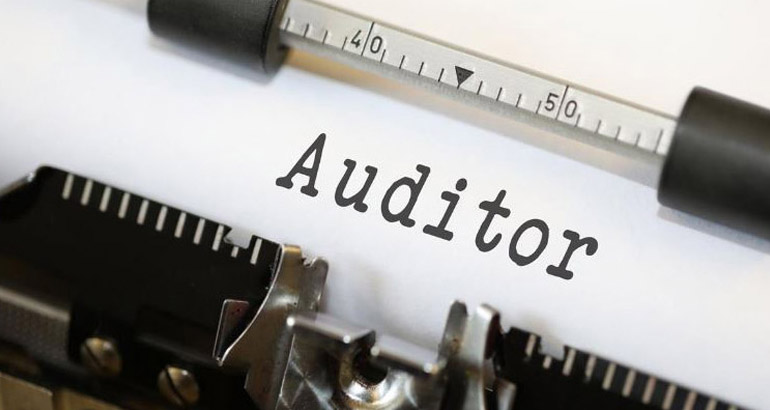Analysis Techniques to Test Data
Audits aren’t limited to ferreting out misdeeds or egregious flaws in your system. They also help identify data entry errors or misstatements in your company financial statements. An auditor uses analysis techniques for testing random data or target specific data if an internal auditor feels an internal control process is at risk. Substantive procedures include, but aren’t limited to, transaction matching, a physical inventory count, audit trail calculations and recalculating already-reconciled financial statements such as monthly bank reconciliation.
Audit Reporting Procedures
A final Internal Audit report marks the end of the internal auditing process for your business. Although reporting always includes a formal statement, it can also have a preliminary or memo-style interim report. A temporary report generally includes sensitive or significant results the auditor feels are necessary to share immediately with the business owner.
A final report is more formal and consists of a summary of the procedures and techniques used in completing the audit, a description of audit findings and suggestions for changes or improvements to internal controls and control procedures.
Evidence is vital for an Auditor to form an opinion regarding financial statements. If the auditor fails to collect proper proof, it reduces the reliability of the auditor’s final report.
Essential Audit Techniques For Every Auditor
Vouching is the process of an Auditor verifying accounting transactions with documentary evidence. With this method, the auditor verifies the authority and authenticity of company statements.
A Confirmation is a technique used to validate the accuracy of a transaction. For example; an Auditor obtains a written statement directly from debtors to confirm a debtor’s balance as it appears in the client’s records.
Reconciliation is an audit technique used by an Auditor to understand the reason for differences in balances. For example, to investigate the difference in the bank records of a company client and the financial records as it appears in the company’s bank statements, the auditor prepares the reconciliation statement.
Testing is an audit technique of selecting representative transactions out of whole accounting data to conclude all items.
A physical examination requires the verification and confirmation of the physical existence of tangible company assets as appears in a Balance Sheet like cash in hand, land and building, plant and machinery, etc.
Analysis is a technique used by an Auditor to segregate essential facts and to study their relationship further.
By scanning books of accounts, an experienced Auditor can identify those entries which would require his attention. It is also called scrutiny of accounts.
This method is crucial to collect in-depth information about any transaction.
Verification of Posting
To verify books with the original entry to the ledger account and confirm the balance, an Auditor needs to verify the postings in the company ledger. For example, to prove a sale book, an Auditor may verify postings from the sale register to the sale ledger. They may further calculate the balances of the sale register and the sale book.
An Auditor uses flow charts to determine the stages of the transaction and the generation of documents at all levels of transactions.
Through observation, an Auditor gets an idea about the reliability of the process and the procedure of an organisation.
Step by Step Process of Internal Audit
Let us now get to the steps of the internal audit process.
-
Identify Areas that Need Auditing
Identify the departments that operate by using policies and guidelines written by the organisation or by regulatory agencies. This can include areas as complicated manufacturing procedure or as simplistic as accounting procedure. Make a list of each region and the functions of the area that needs review.
-
Determine What and When to Audit
Some regions may only need to be audited yearly while some departments may need more frequent audits. For example, – the process of manufacturing may need daily audits for quality control purposes while the HR function may only require a yearly review of records and procedures.
-
Create an Audit Calendar
Forming an audit schedule provides the sections with advanced notice of the forthcoming audit. The program will help them have the essential documentation and records available for review and audit. A structured and systematic method to the auditing process can help ensure the function gets completed.
-
Alert the Departments of Scheduled Audits
It is merely a common courtesy to give the departments notice of an audit so they can have necessary documents and materials ready and available for a reviewer. A surprise audit should only be done if there is a feeling of immoral or illegal activity.
-
Be Ready
The auditor should come ready with an understanding of policies and guidelines and a list of items that will be reviewed. For example, – An HR audit may focus on employee files and 1-9 acquiescence. The more prepared the auditor is the more well-organized the procedure will be, and the less downtime there will be for the area being reviewed.
-
Interview Operators
The auditor should talk to the employees and ask them to explain their work procedure. Compare the process, as the employee told it, to what the written rule says. This step is to gain an understanding of employee capability and identify areas that need added training.
-
Document Reports
Document the results and any difference in practice to how the policies are written, when the procedures are fulfilled with and when they are not. This may also include other information that is collected from the interview procedure. Again, the goal is to recognise gaps in compliance and to figure out a way to bridge that gap.
-
Report the Findings
Create an easy to read audit information. These reports should be revised with senior management, and an upgrading plan should be developed for areas that have gaps in practice compliance. These reports should be reviewed and approved by the department manager / top management.
Organisations are only as successful as their capability to create products and services that meet the requirements of their clientele and to deliver these products and services accurately, seamlessly and without error.
JAXA Chartered Accountants is a leading financial firm that provides various financial services such as Auditing Services, Accounting Services, Tax related services and many more. If you need more information about the services then feel free to Contact Us. We will be glad to help you out.





